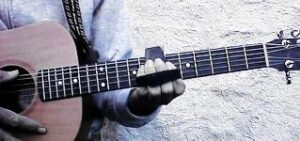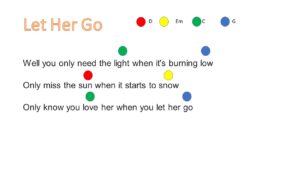What are adaptive lessons?
Everyone can create great sounding music if they find the right way! Music is a universal language to express our emotions and to communicate with others. With simple adaptations, we can make and perform music no matter age, disability, or impairment.
Compared to regular lessons, adaptive lessons are designed for students with special needs. It addresses the developmental needs of the students and provides better pacing while they learn to play an instrument or to sing. There are different methods and approaches that offer customized classes for children with special need through different program such as Kindermusik, Music Together, and Orff. Today, I would like to share some of my experiences in adaptive guitar lessons.
Change Your Mindset
Be creative, be patient, be flexible.
Unlike typical music lessons, we should change our mindset about teaching. We are not only there to teach and transmit information, we should build good rapport with students because we are there to support them.
Depending on students’ ability and interests, we would design the lessons based on different areas. We should pay attention to their attention span, and their gross motor, fine motor, eye-hand coordination, visual and auditory processing, and cognitive skills.
Let us be client centered! We should have a goal but not have a fixated lesson plan.
Now think about the content and method. What works for your students? What genre of music are they interested in playing? Do they want to learn chords or notes? Do they want to sing and play? Do they feel comfortable with the vibration from the guitar strings? Do they require any adaptive tools? Would musical games and improvisational play help?
Adaptive tools

Chord buddy
I got my first guitar in college, and it came with a Chord Buddy. I did not pay attention to the tool at first, but it turned out to be a great beginning option for my adaptive guitar students. With Chord Buddy, students can play any four- chord songs in the key of G by pressing the 4 color coded buttons. Make sure to install it properly by attaching it to the fretboard of the guitar.
- play G chord (blue) with your pinky
- play D chord (red) with your ring finger
- play C chord (green) with your middle finger
- play E minor chord (yellow) with your index finger

Guitar Barre
With open C tuning and Guitar Barre, students can play any 3 chord (C, F, G) songs easily. Guitar Barre is a chording device, which is basically a hybrid of the capo and slide. I highly recommend this beginning guitar teaching tool. First, use open C tuning strategy (C, G, C, G, C, E), then place the label along the fretboard to the correct ‘barreing’ position (5th fret= F, 7th fret= G). When strumming the guitar, push the Guitar Barre down against all of the stings on the label like you are playing a barre chord.
Methods and Content Examples
Strumming patterns
You can always start with some rhythmic exercise by clapping or tapping before strumming on the strings. Using visual and verbal cues is very helpful! Do not forget to use the metronome too!
Below are some examples of color-coded music and number-coded music. If you label the chords with numbers, you can also provide hand gestures to different chords (C = 0, F = 5, and G = 7) in the lessons.



